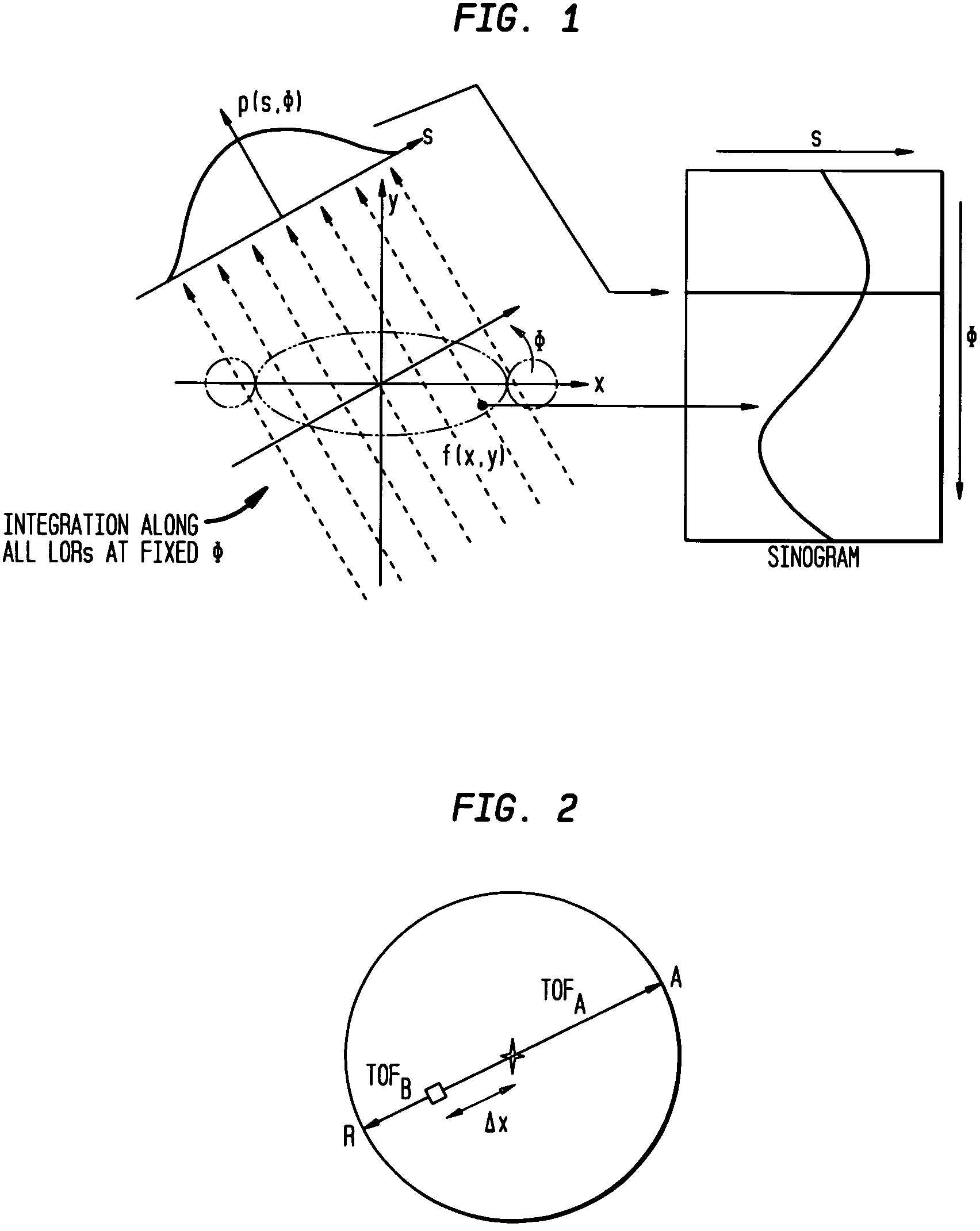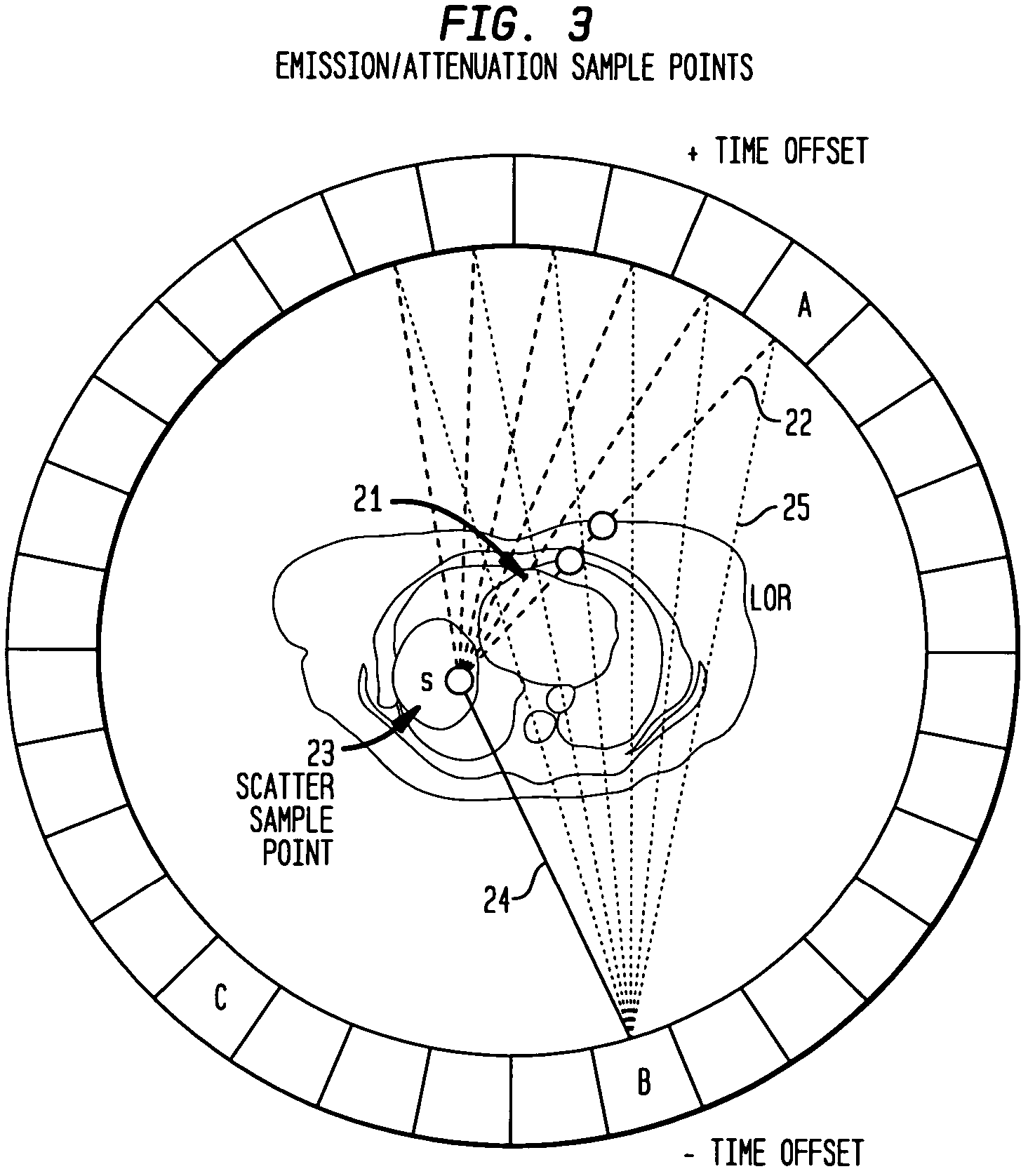Scatter correction for time-of-flight positron emission tomography data
a positron emission tomography and time-of-flight technology, applied in the field of nuclear medicine, can solve the problems of poor spatial resolution, lower sensitivity, and offset of the snr gain provided by the tof measurement of about 500 ps resolution
- Summary
- Abstract
- Description
- Claims
- Application Information
AI Technical Summary
Benefits of technology
Problems solved by technology
Method used
Image
Examples
Embodiment Construction
[0038]The present invention will now be described and disclosed in greater detail. It is to be understood, however, that the disclosed embodiments are merely exemplary of the invention and that the invention may be embodied in various and alternative forms. Therefore, specific structural and functional details disclosed herein are not to be interpreted as limiting the scope of the claims, but are merely provided as an example to teach one having ordinary skill in the art to make and use the invention.
[0039]As explained above, in conventional PET, the integrals through the emission image along rays of travel from a scatter point to a detector, such as ∫SBλ(s)ds, do not depend on the LOR with which they are associated. Since each such ray is associated with many LORs, as illustrated in FIG. 3, the numerical computation of the scatter rate can be made more efficient by computing each ray integral only once, and then simply reusing this value whenever the scatter contribution to an asso...
PUM
 Login to View More
Login to View More Abstract
Description
Claims
Application Information
 Login to View More
Login to View More - R&D
- Intellectual Property
- Life Sciences
- Materials
- Tech Scout
- Unparalleled Data Quality
- Higher Quality Content
- 60% Fewer Hallucinations
Browse by: Latest US Patents, China's latest patents, Technical Efficacy Thesaurus, Application Domain, Technology Topic, Popular Technical Reports.
© 2025 PatSnap. All rights reserved.Legal|Privacy policy|Modern Slavery Act Transparency Statement|Sitemap|About US| Contact US: help@patsnap.com



